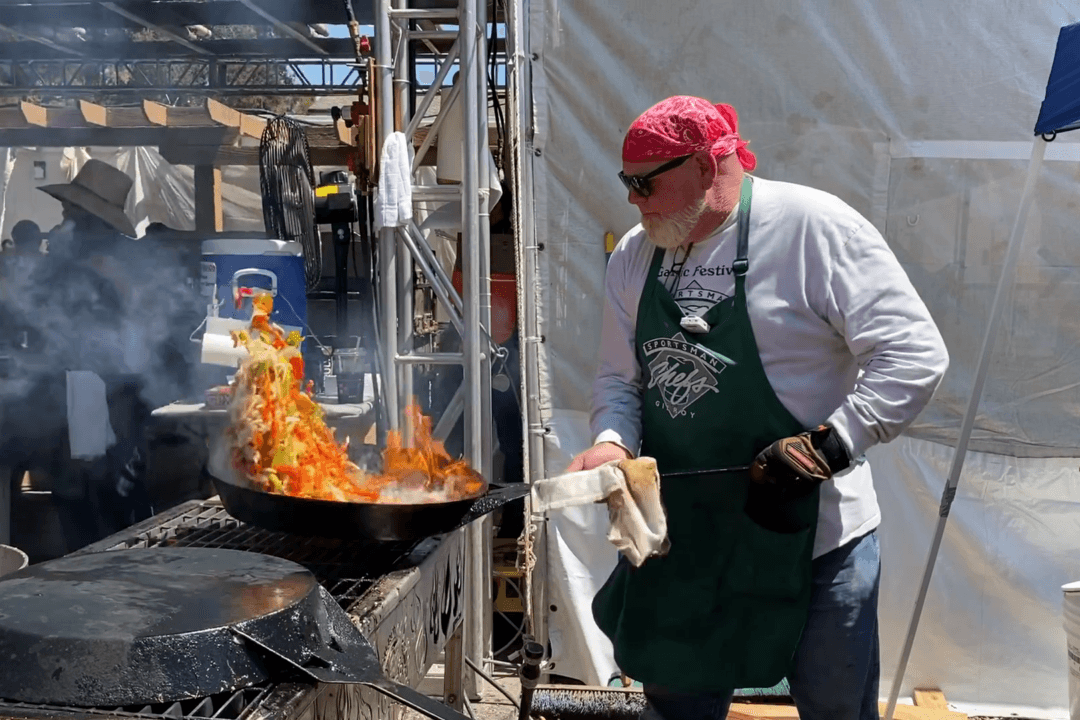JAMESTOWN, Calif.—Gold mining gave California its nickname, the Golden State. While mining nowadays is far from what it used to be, gold fever isn’t completely gone.
Along Highway 49 in Jamestown, California, visitors pan for gold in Woods Creek.
Three generations of the Prebalick family talked to NTD, a sister media of The Epoch Times, about how they have been running California Gold Panning since the late 1970s.

The grandfather, prospector Terry Prebalick, moved to California from Minnesota in 1979 when he was working for a printing press for a newspaper.
“I was out taking my lunch break one day, and I looked down in the creek, and we were watching this old man sitting down on the creek panning—I’d never seen panning before. And all of a sudden he’s waving us down. So we went down and took a look on the creek. He found a three-and-a-half-ounce gold nugget, which is about the size of the palm of our hand, right in here. And it was beautiful,” Terry said. “Ran out the next weekend and bought pans and went gold mining.”
Terry learned the tricks of the trade from old-timer miners.
His most memorable moment was when he found 127 ounces of gold.
“Oh ... I filled a pan up about that thick of gold. And it was just beautiful,” he recalled. “The biggest nugget I had in there was just under 3 ounces.”
Back then, he was able to dive 8 feet underwater to dig for gold. It took two days to clean out the crevice.

He would sell the gold to make a living and raise his family.
“I had good luck in some of the days,” he said. “[Some days you] eat fried egg sandwiches, and other days you eat steak. You know, it’s like life. It’s hard work; you got to work. It’s not going to jump in your pan for you. You got to work hard for it.”
He passed on his knowledge to his son Nick, who passed it on to his son Nathaniel, or Nate.
“It’s great. I get to see my son and my father all the time. Everybody doesn’t get to do that. This is the only exercise that Dad gets. He’d be sitting on the couch otherwise, watching TV,” Nick Prebalick said. “I’m lucky in the way that this is my office. It’s more meditative than anything for me.”
Now they teach people how to pan for gold.
“So what we do for our guests is to bring them down and give them a full experience as an 1800s miner, basically. We use a little bit more modern tools, of course, but what we do is get them right in the water, get dirty,” Nate Prebalick said.

Nate demonstrates where and how to dig and how to filter out material.
“Any dirt around us is the material that we’re going to dig up. We sift through it first, using a device called a classifier, and that’s where we filter out large rocks,” Nate said.
They get rid of all the extra material and collect all the remaining sandy bits.
“Then we have a device called a sluice box we set right in the creek, and it filters it even further. So we can run anywhere from one five-gallon bucket of material to 100 five-gallon buckets of material, and it’s going to sift it all down to just one gold pan’s worth,” he said.
This way, the box does 100 times the work, making the process quicker.
When only gold is left, Nate uses his fingers to pick up the tiny pieces and put them in a tiny jar for display.

“A lot of modern miners use what’s called a snuffer bottle, just a little suction device to suck all this up. I don’t really use all that fancy equipment, so I just use my hand and the creek that I’m in,” Nate said.
According to Nate, the world’s largest crystalline gold—about 24 pounds—was found in the creek.
“So there’s a possibility to strike [it] incredibly rich. But for the most part, we find very small flakes of placer gold today,” he said.
Placer gold is little chunks of gold floating in the water. The area is known for lode gold, where the gold is naturally formed to quartz crystals.

“That’s what the big ticket item is out here. Being able to find any gold attached to this quartz is what made this area so valuable back in the day. Between 1849 and [the] early 1900s, they pulled an estimated 187 tons out of this area,” Nate said.
Despite so many tons of gold being removed, Nate’s grandfather estimates that miners have only removed about 15 percent of the gold in California.
“What we find out here is 22- to 23-karat pure gold,” Nate said. “You can only get 24-karat gold ... by chemically processing it. So out here, it’s as pure as it can naturally be.”
Visitors can book tours to pan in groups for anywhere from an hour to three days.
The Prebalicks hope to keep the family business going for years to come.





